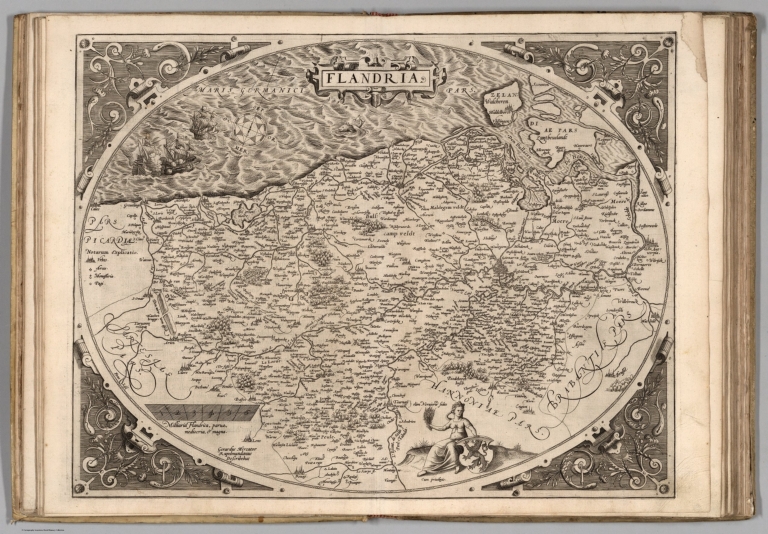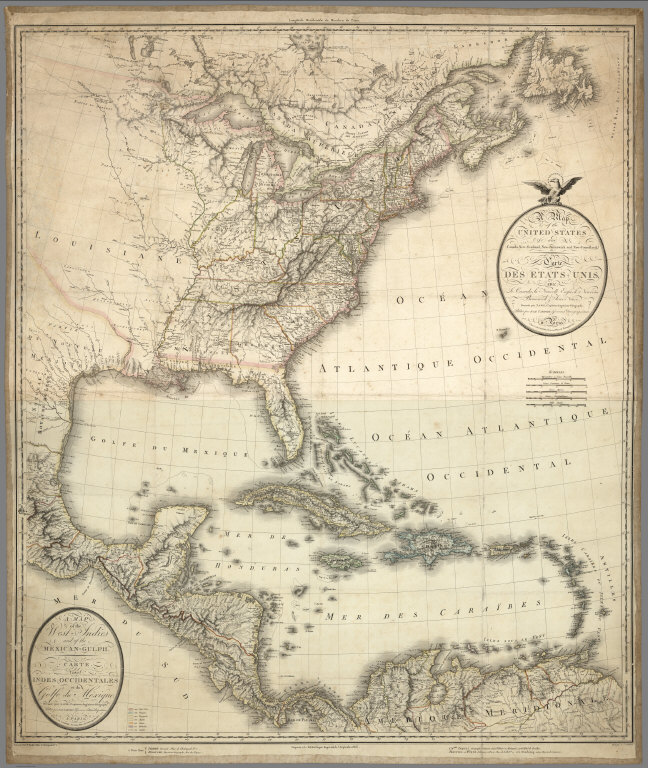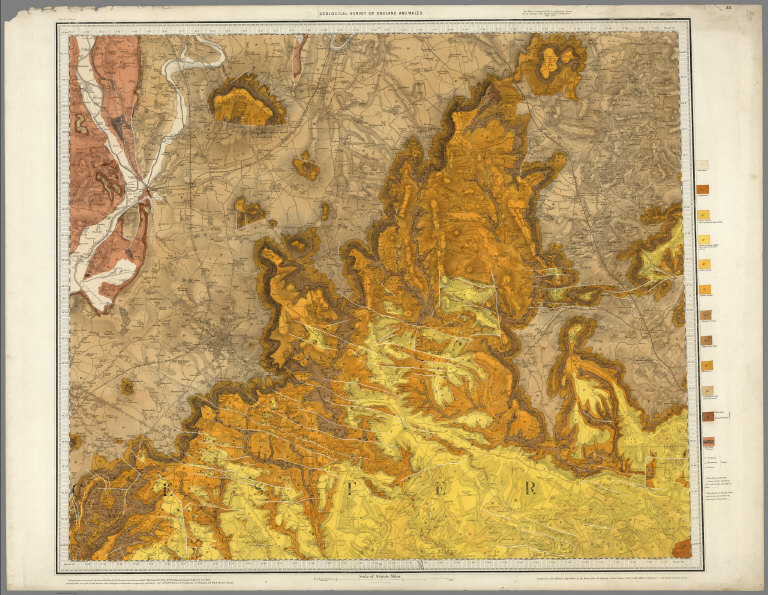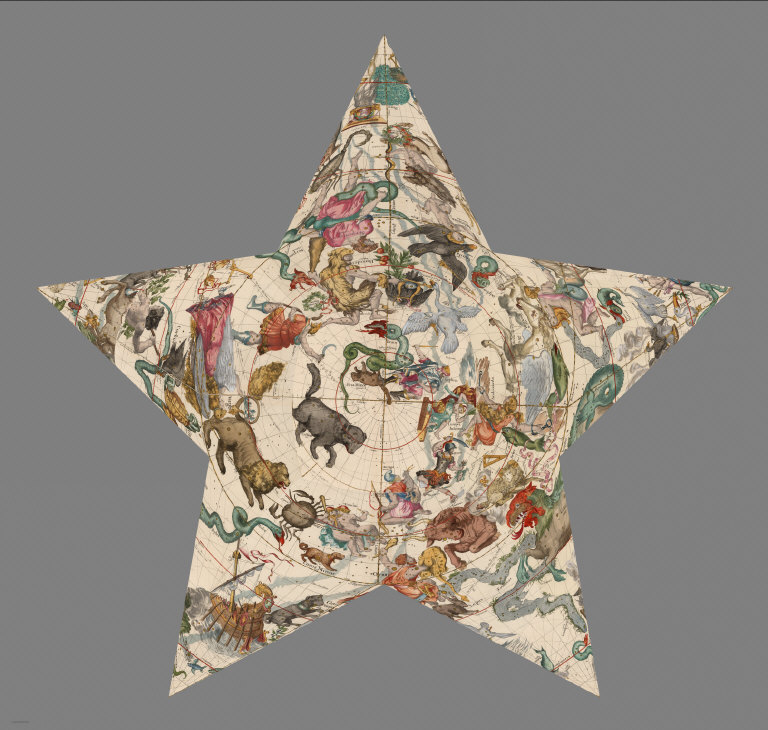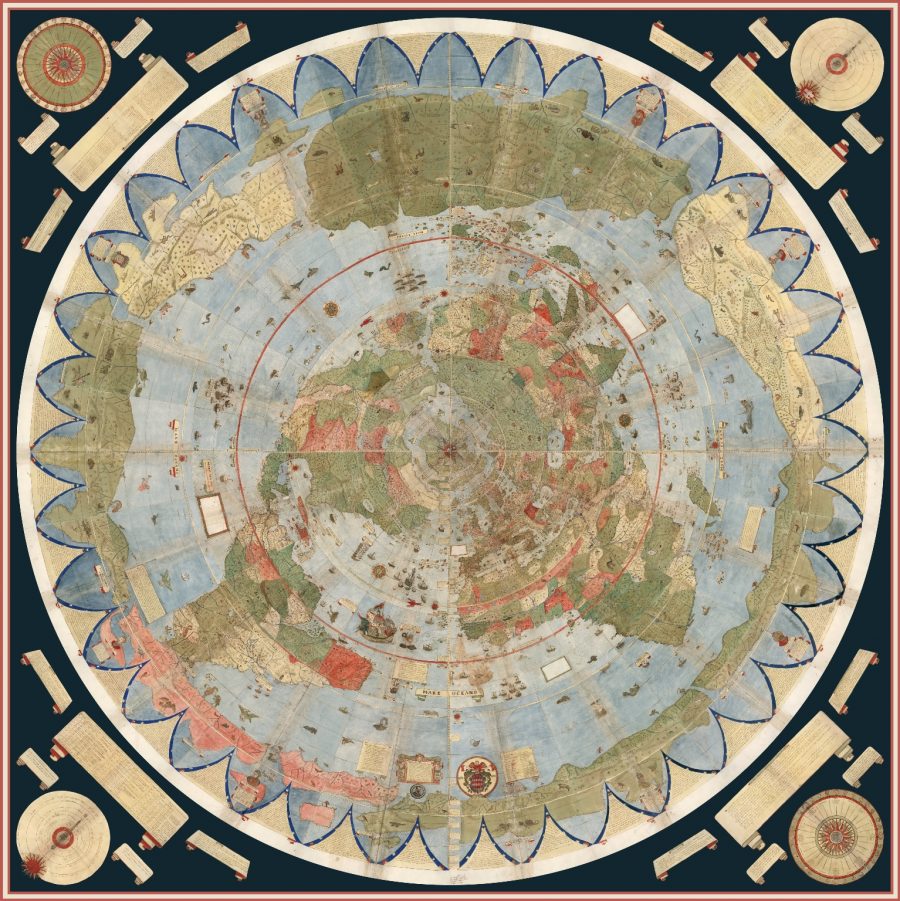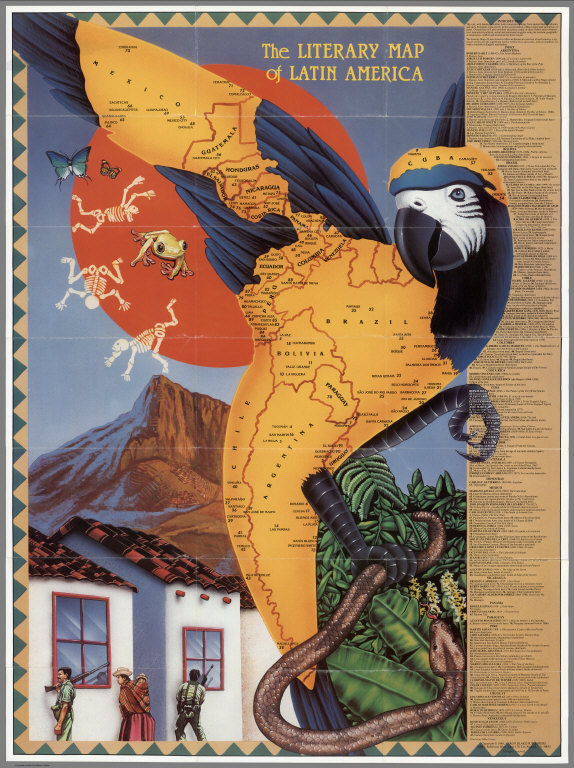[Most Recent Entries] [Calendar View]
Tuesday, May 28th, 2019
| Time | Event |
| 8:00a | Andy Warhol Demystified: Four Videos Explain His Groundbreaking Art and Its Cultural Impact We all have a few images to associate with Andy Warhol — Campbell's soup cans, colorized Marilyns and duplicated Elvises, that wig — and also a few words, usually something to the effect of everyone in the future being famous for fifteen minutes. Now that we seem nearly to have arrived in that future, we might well wonder what else Warhol understood about our world. But we can't know that until we have a clearer sense of just what he was up to, and these four short primers offer a solid start on grasping the whole Warholian project. Just above, Alain de Botton's School of Life introduces Warhol as "the most glamorous figure of 20th century art" whose great achievement was to "develop a generous and helpful view of two major forces in modern society: commerce and celebrity." "We spend too much of our life wanting something better and extraordinary," says de Botton. "Andy Warhol aims to remedy this by getting us to look again at things in everyday life" — the soup cans stacked up at the grocery store, for instance. Warhol's work also reveals an understanding of glamor and prestige, ever more powerful forces in the 20th century in which he lived as well as ones that, in his view, "needed to be redistributed in such a way that society could work better." His dual interests in art and changing the world in an unprecedentedly industrial age led him to mass production: "He wanted to translate the things he cared about, like sensitivity, a love of glamor and spectacle, and playfulness into objects and experiences that could touch many people" — as many people and as often, ideally, as Coca-Cola. But does what Warhol did quite count as art? Khan Academy founder Sal Khan and its Co-Dean of Art and History Steven Zucker get into that question in their Smarthistory video on the silkscreened soup cans from the early 1960s. On one hand, the cans exemplify what Zucker calls "one of the central ideas of modern art," that you can "take something that's not necessarily based in technical skill" and relocate it so as to make us "think about it in a different way." But on the other, Khan says, if Warhol had made them half a century earlier, "people would have thought, 'This guy's a quack,'" and if he did it now, "they would think he was just derivative." Was it really "just that time where people happened to think this was art?" Certainly there can be no separating Warhol from his time. He asked, as Zucker puts it, "What is it about our culture that is really authentic and important?" The answer, as he saw it, "was about mass production, it was about factory." No coincidence, then, that he named his New York studio "The Factory," nor that he displayed a great fascination with industry and commerce in all its forms. He started his career as a commercial illustrator, but ultimately, "instead of making art for advertisements, he started making advertisements as art." Those words come from the Art Assignment video above, which makes "the case for Andy Warhol," whose work, says host Sarah Urist Green, "charts the development of our obsession with fame and questions the growing commercialization and uniformity of most areas of American life." Warhol wasn't just an artist, Green says, "but also a filmmaker, band manager, magazine publisher, and TV producer who fearlessly explored and embraced new media." Writing a diet book was perhaps the only way Warhol didn't tap into the American zeitgeist, but perhaps, as demonstrated in the longer Art Assignment video called "Eat Like Andy Warhol" above, that task is best left to his scholars. In it Green and company work through "a tasting menu that explores Warhol's life through the food he depicted as well as the food he actually ate." It includes not just Campbell's soup and Coca-Cola but frozen hot chocolate, a banana (remember, he gave Velvet Underground their start), diet pills (now known as amphetamines), and perhaps most Warholian of all, something listed only as "cake." It's a diet fit for what Green describes as "the ultimate producer and consumer and product all in one" — as well as an artist who both defined and embodied 20th-century America. Related Content: 130,000 Photographs by Andy Warhol Are Now Available Online, Courtesy of Stanford University When Steve Jobs Taught Andy Warhol to Make Art on the Very First Macintosh (1984) Andy Warhol Digitally Paints Debbie Harry with the Amiga 1000 Computer (1985) Warhol’s Cinema: A Mirror for the Sixties (1989) When Andy Warhol Made a Batman Superhero Movie (1964) Based in Seoul, Colin Marshall writes and broadcasts on cities, language, and culture. His projects include the book The Stateless City: a Walk through 21st-Century Los Angeles and the video series The City in Cinema. Follow him on Twitter at @colinmarshall, on Facebook, or on Instagram. Andy Warhol Demystified: Four Videos Explain His Groundbreaking Art and Its Cultural Impact is a post from: Open Culture. Follow us on Facebook, Twitter, and Google Plus, or get our Daily Email. And don't miss our big collections of Free Online Courses, Free Online Movies, Free eBooks, Free Audio Books, Free Foreign Language Lessons, and MOOCs. |
| 2:00p | Hear the Song That Two Teenage Musicians, Frank Zappa and Captain Beefheart, Recorded Together in 1958 Rock and roll needs its outsiders, its prodigious weirdos, tricksters and pastiche artists to reinvigorate moribund genres and put things together no one thought would go. No two people fit the description better than Frank Zappa and Captain Beefheart (Don Van Vliet), sometime collaborators, frenemies, and parallel evil geniuses with crack teams of musical henchmen at the ready—Zappa the genre-hopping virtuoso and music business supervillain; Beefheart the mad bluesman with a Beat poet’s heart and Merry Prankster’s sense of humor…. Their intense on-again-off-again musical relationship threatened to come apart for good during the recording of Beefheart’s Zappa-produced weirdo masterpiece Trout Mask Replica. These troubled stages of their association are what we often talk about when we talk about Zappa/Beefheart, when they discovered, writes Ultimate Classic Rock, “that their creative processes and work habits—Zappa was disciplined and exacting, while Beefheart preferred to be spontaneous and freeform—couldn’t have been more at odds.” A little over a decade earlier, before either of them had musical careers necessitating work habits, the two began recording together in “either late 1958 or early 1959,” notes Dangerous Minds. They had known each other since high school in Lancaster, California, where their shared sensibilities brought them together: “The two found they had a similar taste in music, and quickly bonded over a shared love of blues, doo-wop, and R&B records.” Presaging all of the ways they would go on to warp, cannibalize, and mash up these genres, “Lost in a Whirlpool,” with music by Zappa and lyrics by Van Vliet, was one of several songs they had begun writing while still teenagers. Zappa tells the story of the recording in a 1989 interview:
Scatological skindiving seems like such a perfect conceptual summary of the shared Zappa/Beefheart ethos it’s a wonder they didn’t use the title themselves. Despite their growing creative differences and incompatible temperaments, they collaborated into the mid-70s. In 1975, twenty years after cooking up the story of skindiving in the San Diego sewers, they “regaled their fans with the amusingly titled (mostly) live album, Bongo Fury,” Ultimate Classic Rock writes, “a historic ceasefire in their otherwise turbulent relationship that would sadly prove all too fleeting.” The record is the result of an “intensive, 30-date tour” in which “Beefheart contributed harmonica, occasional sax, and numerous displays of his eccentric poetry and one-of-a-kind vocals to the [Zappa] ensemble’s repertoire.” Above, hear Bongo Fury’s “Advance Romance,” as classic a slice of Zappa/Beefheart oddball blues as their very first recordings from the late 50s. via Dangerous Minds/Ultimate Classic Rock Related Content: The Case for Why Captain Beefheart’s Awful Sounding Album, Trout Mask Replica, Is a True Masterpiece The Night Frank Zappa Jammed With Pink Floyd … and Captain Beefheart Too (Belgium, 1969) Hear a Rare Poetry Reading by Captain Beefheart (1993) Josh Jones is a writer and musician based in Durham, NC. Follow him at @jdmagness. Hear the Song That Two Teenage Musicians, Frank Zappa and Captain Beefheart, Recorded Together in 1958 is a post from: Open Culture. Follow us on Facebook, Twitter, and Google Plus, or get our Daily Email. And don't miss our big collections of Free Online Courses, Free Online Movies, Free eBooks, Free Audio Books, Free Foreign Language Lessons, and MOOCs. |
| 5:40p | Bill Gates Recommends Five Books to Read This Summer It's becoming an annual ritual. Every summer Bill Gates offers us a reading list--5-books to take on vacation. As you'll see, his list assumes that even if you're physically on vacation, your mind isn't. The curious mind takes no breaks. Bill writes:
Would you like to support the mission of Open Culture? Please consider making a donation to our site. It's hard to rely 100% on ads, and your contributions will help us continue providing the best free cultural and educational materials to learners everywhere. Also consider following Open Culture on Facebook and Twitter and sharing intelligent media with your friends. Or sign up for our daily email and get a daily dose of Open Culture in your inbox. Related Content: Bill Gates Names 5 Books You Should Read This Summer (2018) Bill Gates Recommends Five Books for Summer 2017 5 Books Bill Gates Wants You to Read This Summer (2016) Bill Gates Recommends Five Books to Read This Summer is a post from: Open Culture. Follow us on Facebook, Twitter, and Google Plus, or get our Daily Email. And don't miss our big collections of Free Online Courses, Free Online Movies, Free eBooks, Free Audio Books, Free Foreign Language Lessons, and MOOCs. |
| 7:00p | Download 91,000 Historic Maps from the Massive David Rumsey Map Collection
Three years ago, we highlighted one of the most comprehensive map collections in existence, the David Rumsey Map Collection, then newly moved to Stanford University. The Rumsey Collection, we wrote then, “contains a seemingly inexhaustible supply of cartographic images”—justifiable hyperbole, considering the amount of time it would take any one person to absorb the over 150,000 physical artifacts Rumsey has amassed in one place. By 2016, Rumsey had made almost half the collection—over 67,000 images—freely available in a digital archive that has been growing since 1996. Each entry features high-resolution scans for specialists (you can download them for free) and more manageable image sizes for enthusiasts; a wealth of data about provenance and historical context; and digital, user-friendly tools that use crowd-sourcing to measure the accuracy of antiquated maps against GPS renderings.
A completist’s dream, the archive “includes rare 16th through 21st century maps of America, North America, South America, Europe, Asia, Africa, Pacific, Arctic, Antarctic, and the World.” Among the seemingly innumerable examples of cartographic ingenuity we find early data visualizations, utilitarian primers, photographic surveys, intricate topographies, abstract objets d’art, and historical cornerstones of European map-making like Abraham Ortellus’s 1570 map of “Flandria” at the top. The Ortellus “Theatrum” holds “a unique position in the history of cartography,” notes the Rumsey Collection, as “’the world’s first regularly produced atlas.’” It was also the first example of a “Theatre of the World,” a style that would become ubiquitous in the following century, and it was “the first undertaking of its kind to reduce the best available maps to a uniform format."
To make this document even more compelling, it contains its own bibliography. Ortellus "mentioned the names of the authors of the original maps" he drew from “and added a great many names of other cartographers and geographers.” Not all of the 91,000 and counting maps in the Rumsey digital collection combine this degree of stylistic mastery, historical import, and scholarly rigor. But a survey of the Collection’s categories will produce few that disappoint in any one of these areas.
The “important and rare” 1806 map of the U.S. and West Indies by Charles Piquet; the Tolkien-like Vergleichendes Tableau der bedeutendsten Hoehen der Erde, from 1855, a “decorative chart… showing comparative tables of the greatest mountains and volcanoes of the world”; the almost-expressionist map of Cheltenham from 1899 by the Geological Survey of Great Britain and Ireland; the fancifully-illustrated star-shaped star chart made by Ignace Gaston Pardies in 1693; Mike Cressy’s 1988 “Literary Map of Latin America”…..
This briefest overview of the Collection’s highlights already feels exhaustive. No matter your level of interest in maps, from the casual to the lifelong obsessive, The David Rumsey collection will deliver multiple points of entry to maps you never knew existed, and with them, new ways of seeing cities, regions, nations, territories, continents, planets, and beyond. Enter the collection here.
Related Content: Download 67,000 Historic Maps (in High Resolution) from the Wonderful David Rumsey Map Collection View and Download Nearly 60,000 Maps from the U.S. Geological Survey (USGS) Josh Jones is a writer and musician based in Durham, NC. Follow him at @jdmagness Download 91,000 Historic Maps from the Massive David Rumsey Map Collection is a post from: Open Culture. Follow us on Facebook, Twitter, and Google Plus, or get our Daily Email. And don't miss our big collections of Free Online Courses, Free Online Movies, Free eBooks, Free Audio Books, Free Foreign Language Lessons, and MOOCs. |
| << Previous Day |
2019/05/28 [Calendar] |
Next Day >> |







